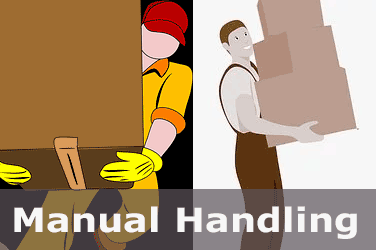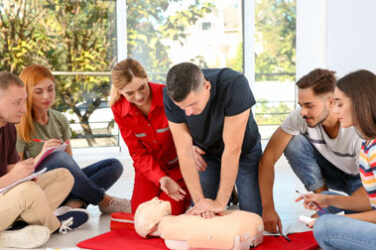Manual Handling Courses

Manual Handling training is a requirement of Regulation 69 of the Safety Health & Welfare at Work (General Application) Regulations. These regulations are applicable to all work places and extremely relevant to many.
So, what exactly is Manual handling? It means any moving of loads by hand where a person could hurt themselves. A fuller definition is: Any transporting or supporting of a load by one or more employees, and includes lifting, putting down, pushing, pulling carrying or moving a load, which by reason of its characteristics or unfavourable conditions, involves risk, particularly of back injury, to employees. Manual handling training courses are specifically designed to enable employees to avoid injuries.
Yes, we take it for granted that we know how to lift or put down a box, without causing injury. Some of us might even rubbish such courses. However, according to a recent Health and Safety Authority’s (HSA) Statistics Summary, manual handling injuries accounted for one third of all reported workplace injuries. These injuries are serious enough to keep the injured party out of work for 3 days or more often at significant expense to the injured party and their employer. Therefore, as an employee or an employer a manual training course is something that has to be taken seriously. As a job seeker, it might even give you an advantage over other applicants who have not completed manual handling training.
The HSA set up a Manual Handling Training Advisory Group. The group has worked in conjunction with the Further Education and Training Awards Council (now QQI) on developing the new Manual Handling Instruction Standards.
In order to raise awareness of this issue and assist employers, the HSA has published a wide range of material on manual handling guidance and has produced on-line video case studies. There is guidance specifically for the Healthcare, Hospitality and Retail Sector where workers are particularly vulnerable to back injury. One of the main contributory causes of back injury in workplaces has been the lack of risk assessment of manual handling. The HSA guidance gives illustrated examples of simple solutions including the use of appropriate handling aids and/or better organisation of work.
Frank Power, Health and Safety Authority Inspector, believes that sector specific guidance is particularly useful, “By looking at the kind of work a Porter, Nurse or Shop Assistant has to do and giving practical examples of how to deal with manual handling we can see improvements in sectors that would have a high incidents of related injuries. There is no point in waiting until an accident has happened, by then it’s too late. I would encourage employers to consult with their employees and together they can come up with solutions that are effective in reducing or avoiding the risk and are acceptable to both parties.”
Manual Handling Courses should not just be seen as another course you have to do. It should be viewed as an occupational training course that will enhance career prospects and workplace performance. As an employee, it might prevent you joining the 33% of people who are annually out of work due to back injury. Work-place accidents also cost an employer a lot of money and expense. Unfortunately, sometimes a back injury can be for life, whilst a training course is just a few hours!


